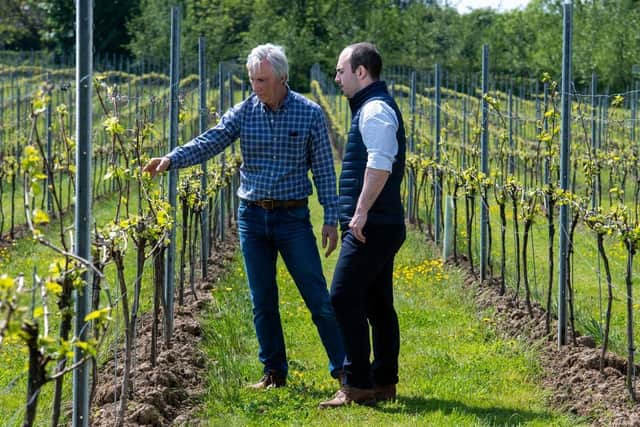North Yorkshire artist creates stunning Roman mural in region's most northerly vineyard
Working in acrylics, Leyburn-based artist Lynn Ward has taken six months to complete the unique painting, which measures an impressive 18 square metres, and brings to life an important part of Yorkshire during the Roman occupation.
Spread across six boards - and standing at 7.3m wide and 2.4m high - it features almost 1,400 people, 86 horses, 18 dogs and even a tiger fighting a gladiator in the amphitheatre.


The mural, now on display at Dunesforde Vineyard, sheds light on what the modern-day village of Aldborough looked like in the third century A.D. when it was the Roman Empire’s administrative centre for northern Britain.
"It is one of the most challenging pieces of work I’ve done but it has also been one of the most rewarding," said Ms Ward.
She added: "Often when you’re creating a work of art, you can use your imagination, but in this case, we were trying to accurately replicate what Aldborough looked like, from buildings to carts and wagons, and so I had to be very precise."
These days Aldborough is a sleepy village, but 1,800 years ago its population numbered around 3,000 people and it was equal in size to York.


Dunesforde Vineyard owner Ian Townsend said he commissioned the painting after learning of a tablet found at the Roman fort of Vindolanda at Hadrian’s Wall - and now stored in the British Museum - which referenced wine making in Aldborough 1,800 years ago.
Mr Townsend said: “This is the first time anyone has attempted to recreate what Aldborough would have looked like when it was an important Roman centre. Everyone involved has worked hard to ensure that this portrayal is as accurate as possible and we hope visitors to the vineyard will find it interesting.
“It would appear that we’re not the first to have a vineyard in this area. The Romans may well have been making wine in Aldborough all those years ago.
"Archaeologists found a tablet in the Roman fort of Vindolanda at Hadrian’s Wall. It was, essentially, an order for wine from Aldborough."
“We’re a boutique vineyard that concentrates on creating quality wines rather than volume. This far north, it’s always a challenge to create wine, but we’re buoyed by the fact that the Romans could have been doing the same thing almost 2,000 years ago,” said Mr Townsend.
Much of the detailed information of what the town looked like has come from the Friends of Roman Aldborough organisation.
David Roberts, a trustee from the Friends of Roman Aldborough, said: "You can’t fail to be impressed by the mural. It’s the only image at the moment that’s been made of Roman Aldborough and it demonstrates how important this place was.
"It breathes life into what we think the town looked like and populates it with people who we know were there. For example, the mural shows a man called Nator, a potter whose name has been found on spoils during archaeological digs.
“What I like is the way it connects the present-day vineyard to the fact that wine might have been made here in Roman Aldborough around 1,800 years ago."
Dunesforde’s Roman Aldborough mural is available to members of the public attending tours and wine tastings at the vineyard.
For booking information you can click here.
Aldborough's Roman history
Aldborough’s Latin name was Isurium Brigantum and the Roman settlement was established some time after 74 A.D. Its creation was only possible because of the agreement between the Romans and Queen Cartimandua of the Brigantes, the Celtic tribe that dominated the region.
Dunesforde Vineyard has a sparkling wine named “Queen of the North”, which celebrates the Brigantes monarch and which is proving popular with northern Brides.
According to Mr Townsend, Roman wine was very different to what is produced today.
He said: “They added a lot of honey so the wine was sweet and some would water it down. Drinking wine instead of untreated water meant there was less chance of being ill. Modern technology would suggest that today’s wines would be superior in quality."
In the present-day village, English Heritage currently manages the Aldborough Roman site which features two mosaic pavements and artefacts recovered from archaeological digs.
The Townsend family planted 6,500 vines on their six-acre site in 2016 and the vineyard currently produces around 3,500 bottles of white, rose and sparkling wines each year. Production is expected to peak at around 8,000 bottles in future years.
__________
Support The Yorkshire Post and become a subscriber today.
Your subscription will help us to continue to bring quality news to the people of Yorkshire. In return, you'll see fewer ads on site, get free access to our app and receive exclusive members-only offers. Click here to subscribe.
